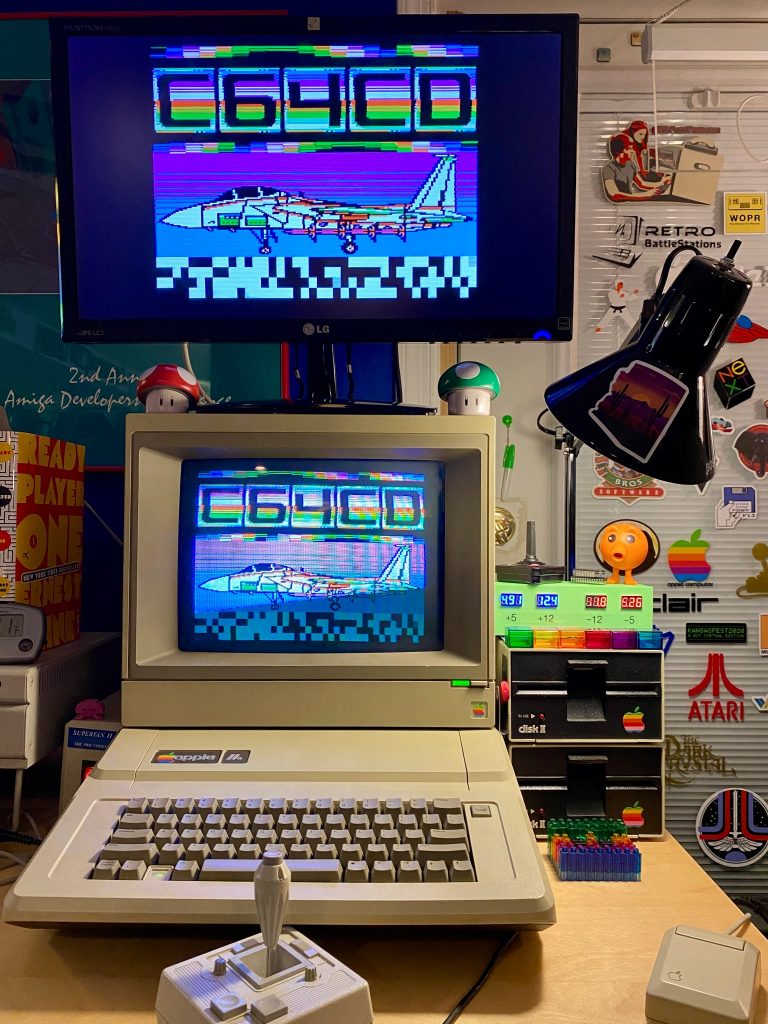One of my favorite vintage systems in the “Byte Cellar” is my 128k enhanced Apple IIe. It is also one of the most frequently used; I fire it up for IRC or BBS sessions several times a week, and game and watch demos on it almost as often. The Apple II (a //c, specifically) was one of my very first home computers, and I have owned several different IIs over the years. As such, the Apple II platform holds a special place in my heart.
As far as I am aware, this Apple IIe has the original power supply in place. (I acquired this unit on eBay in late 2008 [gallery] and got my first IIe back in 1986.) Not too long ago, I purchased a replacement power supply kit from ReactiveMicro, but haven’t had a need to install it as yet, but I’ve been a little curious how well the in-place PSU is supplying power.
A few days ago I was browsing eBay’s Vintage Computing listings when I saw a modern device that could quell that curiosity. The device in question is the “Apple II+ IIe & IIGS Continuous Power Monitor Display,” which is an external 3D-printed box housing blue and red LED readouts for the Apple II’s +5, +12, -5, and -12 power lines that is attached to a simple breakout card that can be seated in any slot in the system. The unit gives a constant reading of the bus voltage levels while, its creator assures me, drawing a negligible amount of power from the system.
As I said, I was curious about the levels being output by my aged PSU, but that’s not why I bought this thing. I grabbed it because it looks all retro-tech “blinkenlights” cool. It reminds me of something that might have been part of David Lightman’s IMSAI 8080 setup [info via Wayback Machine]. I had two free slots (5 and 6) and I now have but one.
Have a look at the box for yourself. The embedded photo is a still of the scenedemo F15 D’Gamma Clone released by C64CD in 2016 and the video shows the system running the demo Plasmagoria, released by French Touch (who make quite a few demos for the Apple II) in 2015. Audio is being output via a stereo, 8-channel (6 voices, 2 whitenoise channels) Mockingboard “K” soundcard slotted into the system and the secondary, HDMI display is being driven by a VidHD board. A few voltage fluctuations can be seen in the video but it doesn’t get much more exciting than that, I’m afraid. My need-case for the power monitor is a little silly, but it feels fun!


Hypnotic. Trying to keep any eye on the voltage readouts reminds me of one of those exercises in which one watches a basketball team pass balls around, and in doing so miss the guy in the gorilla suit walking through.